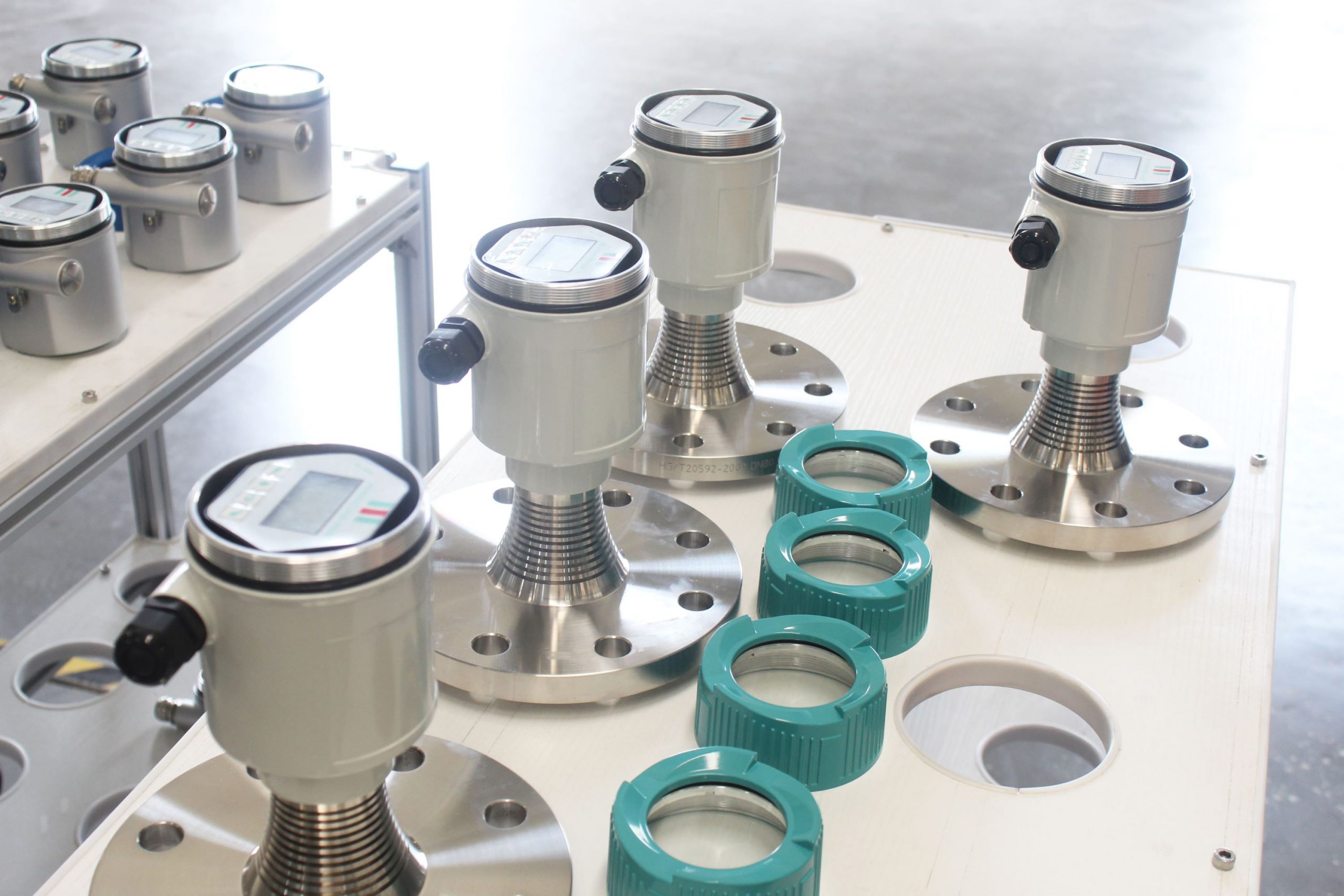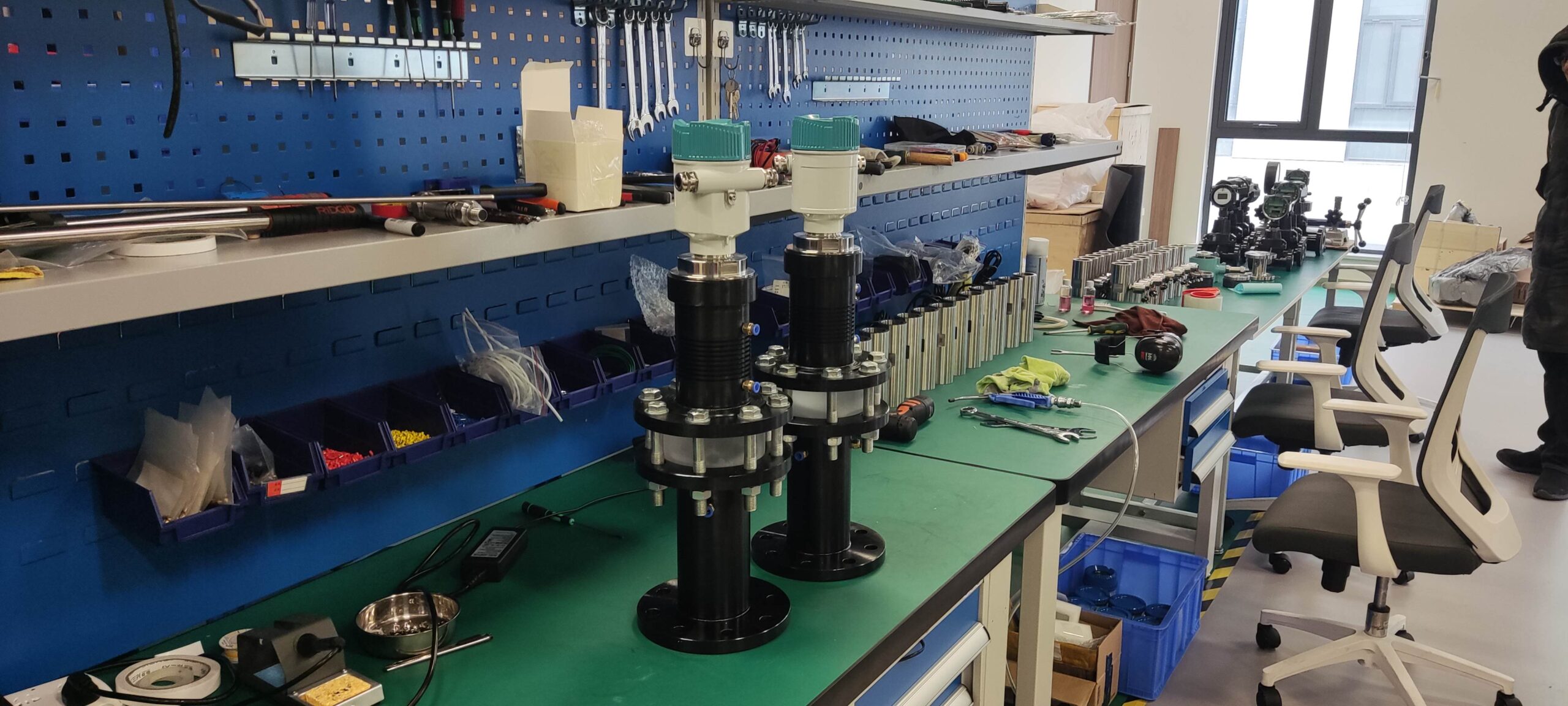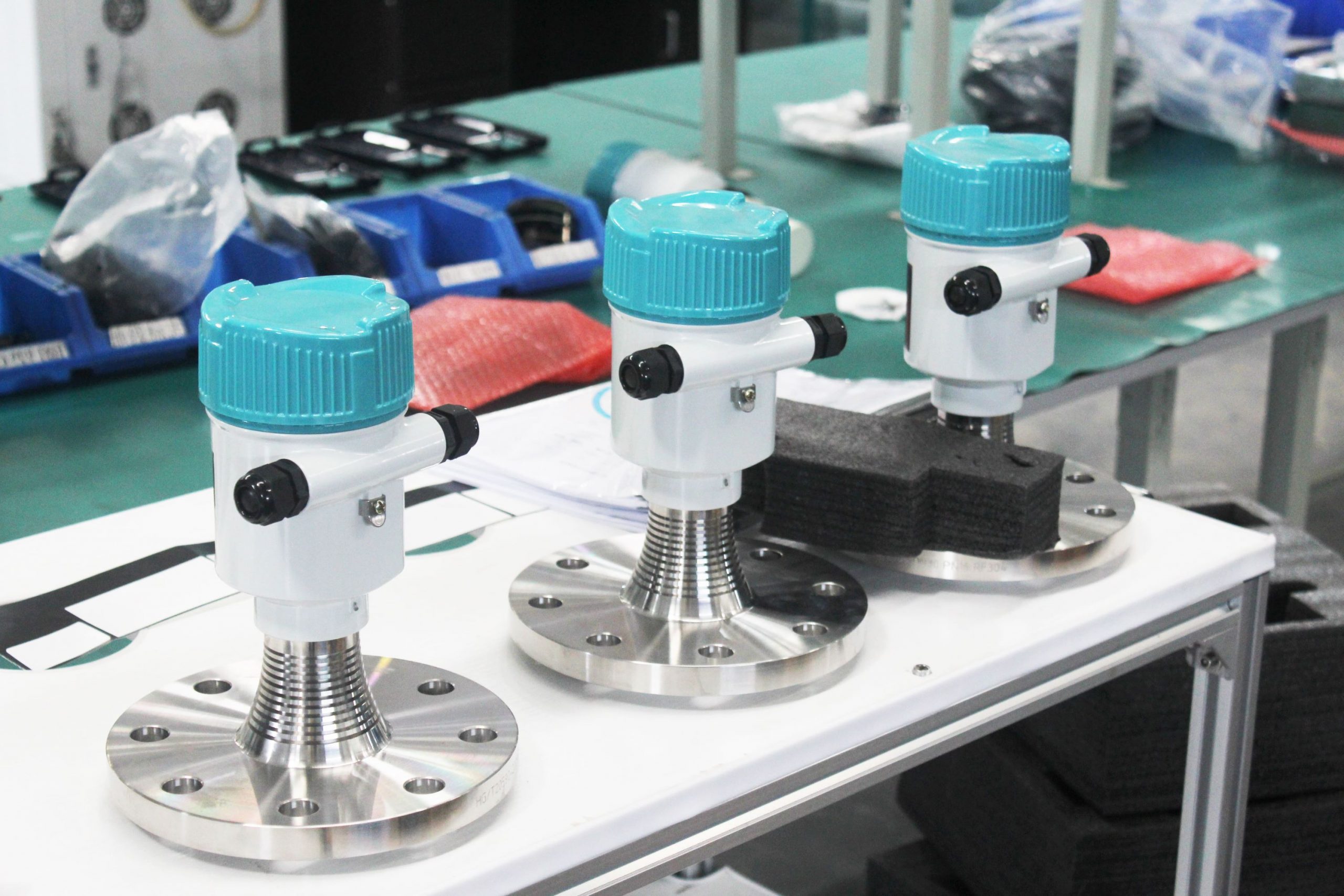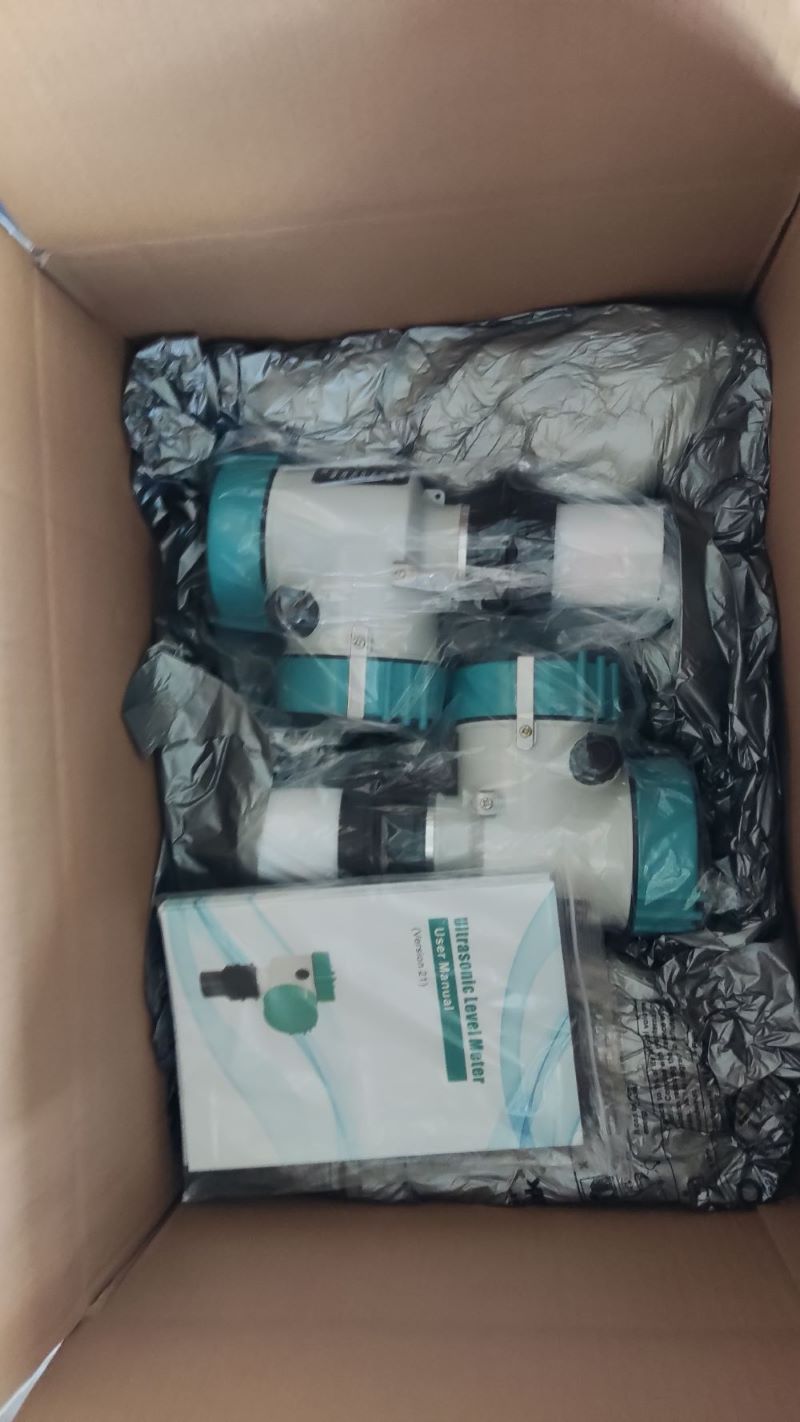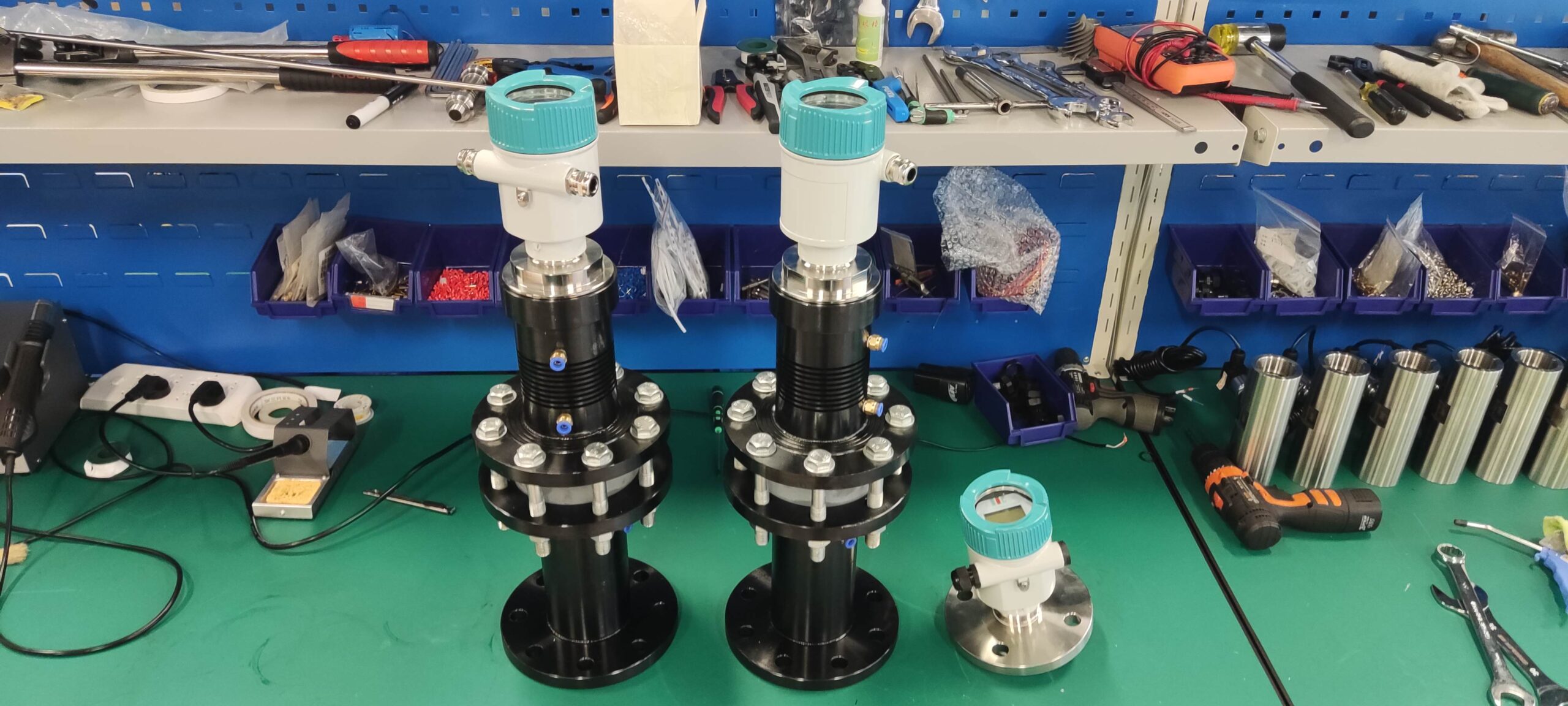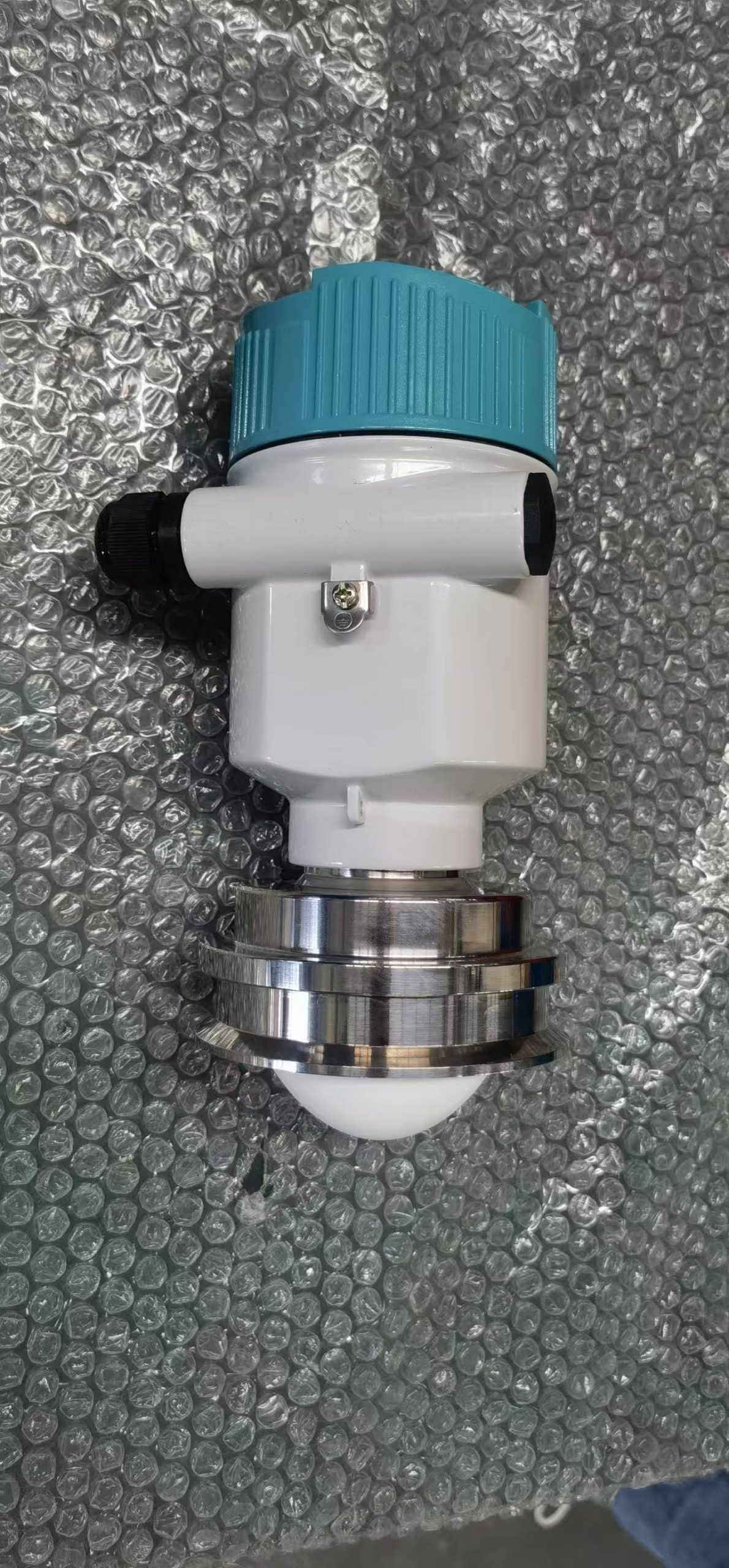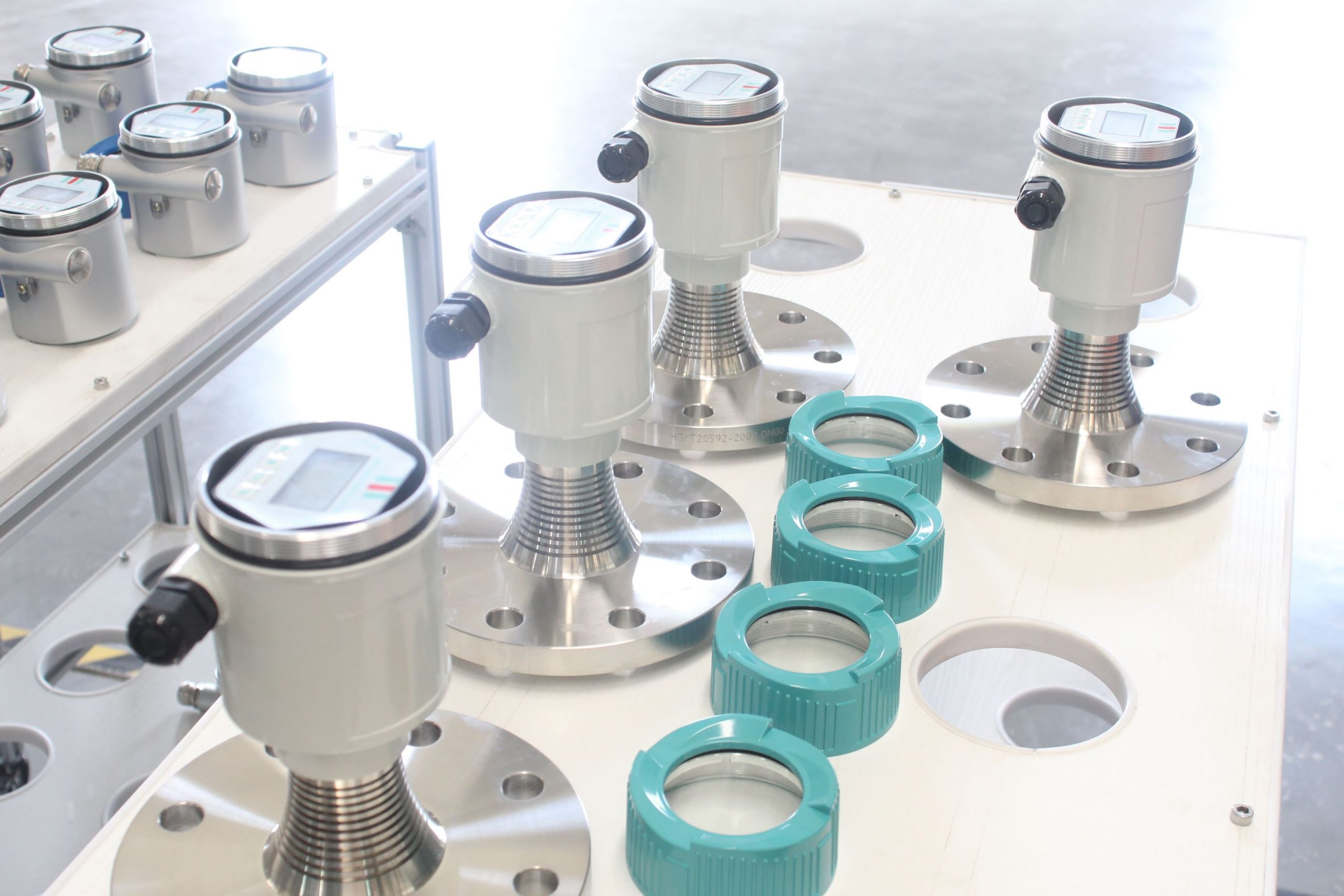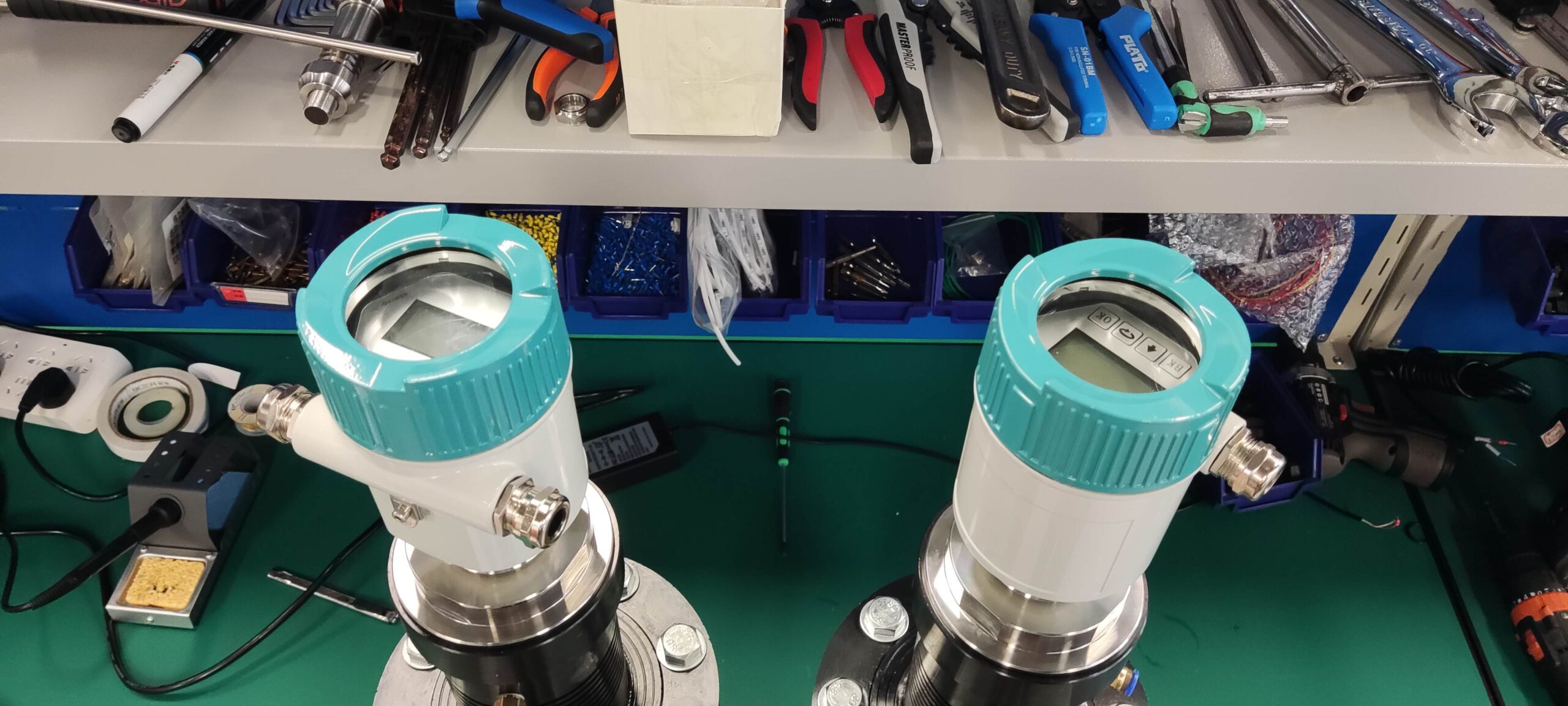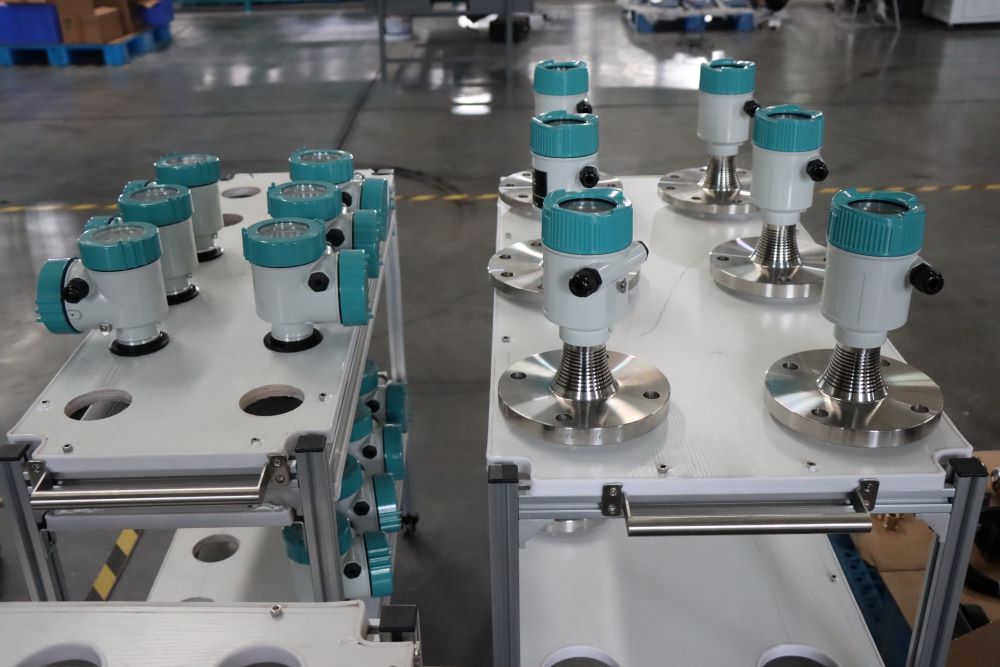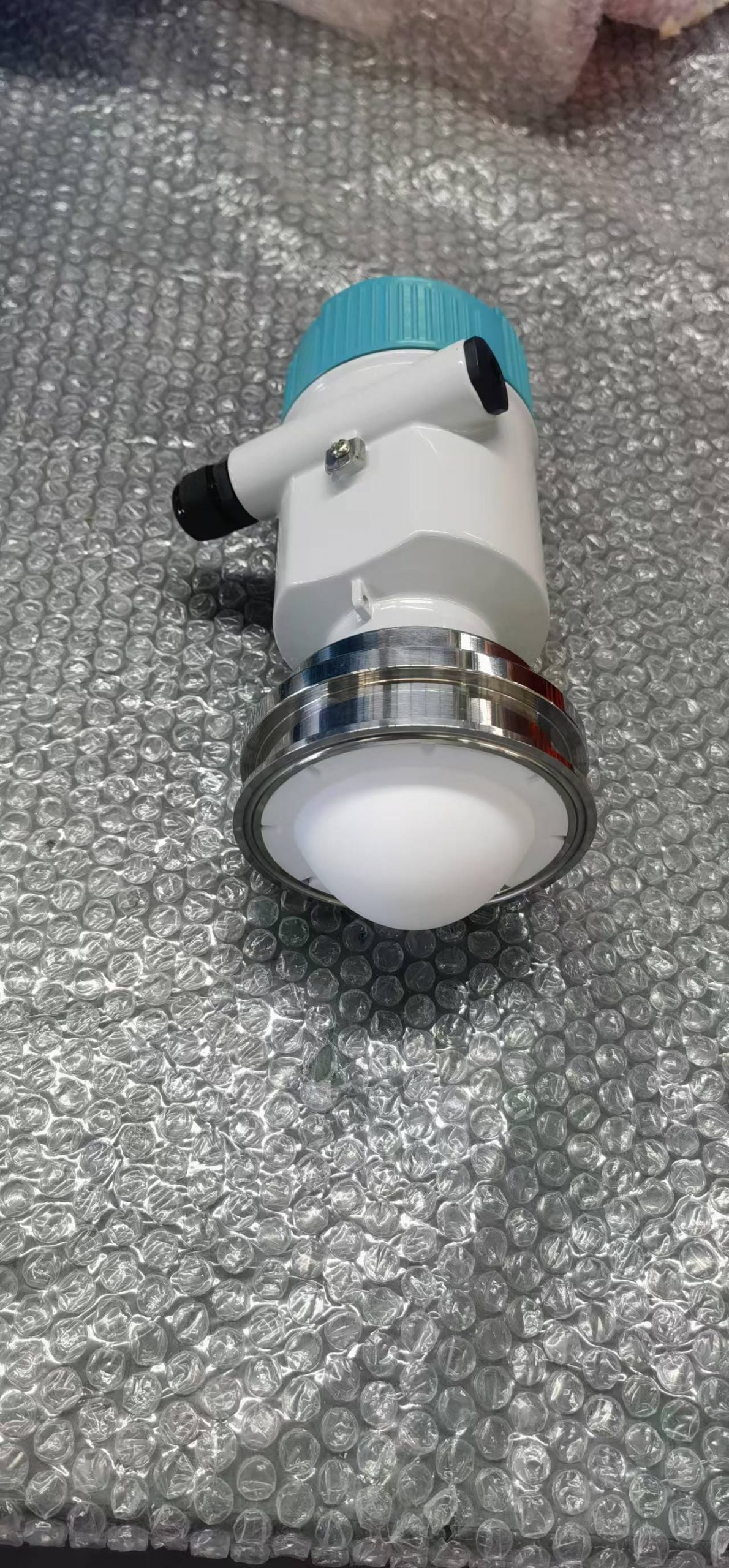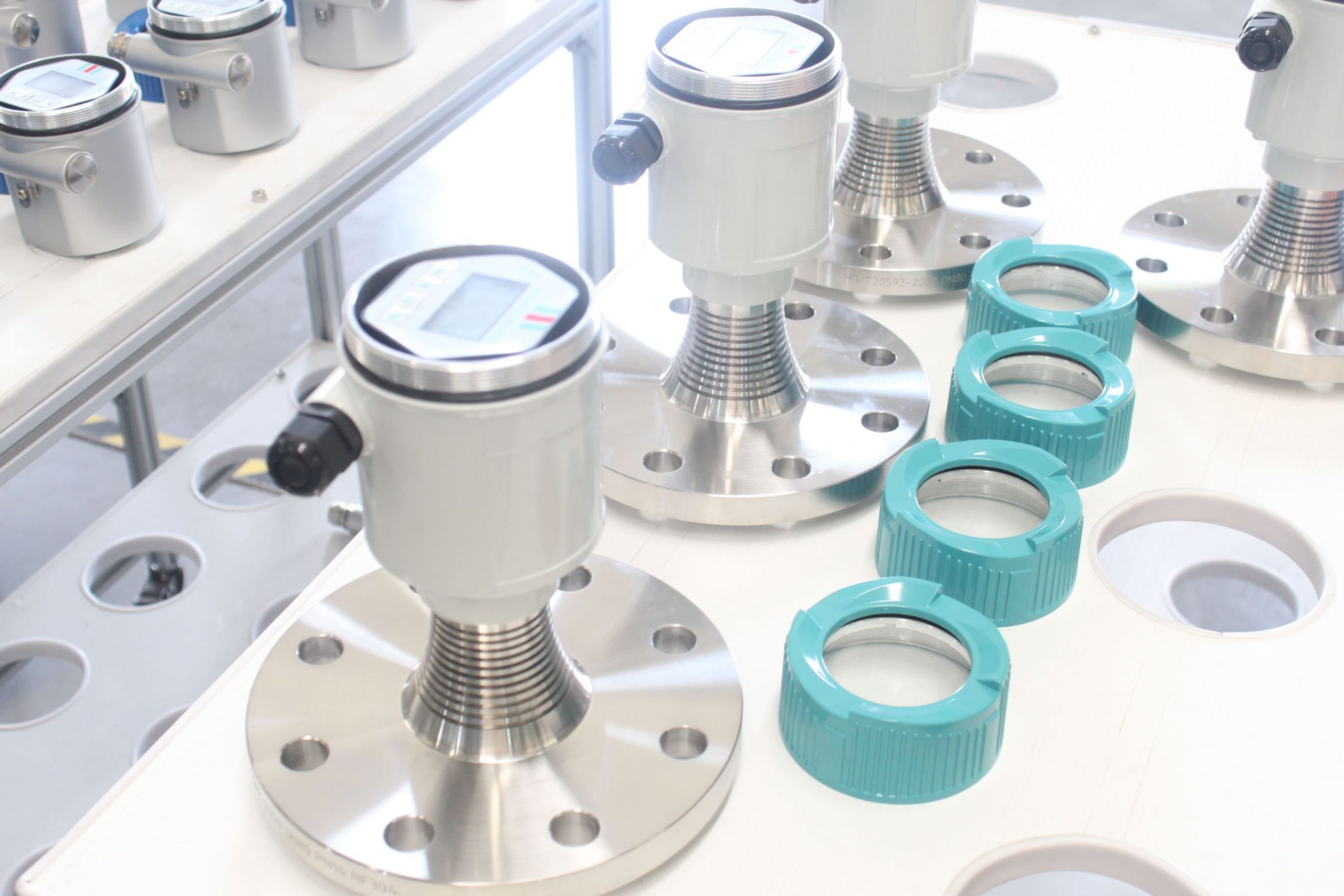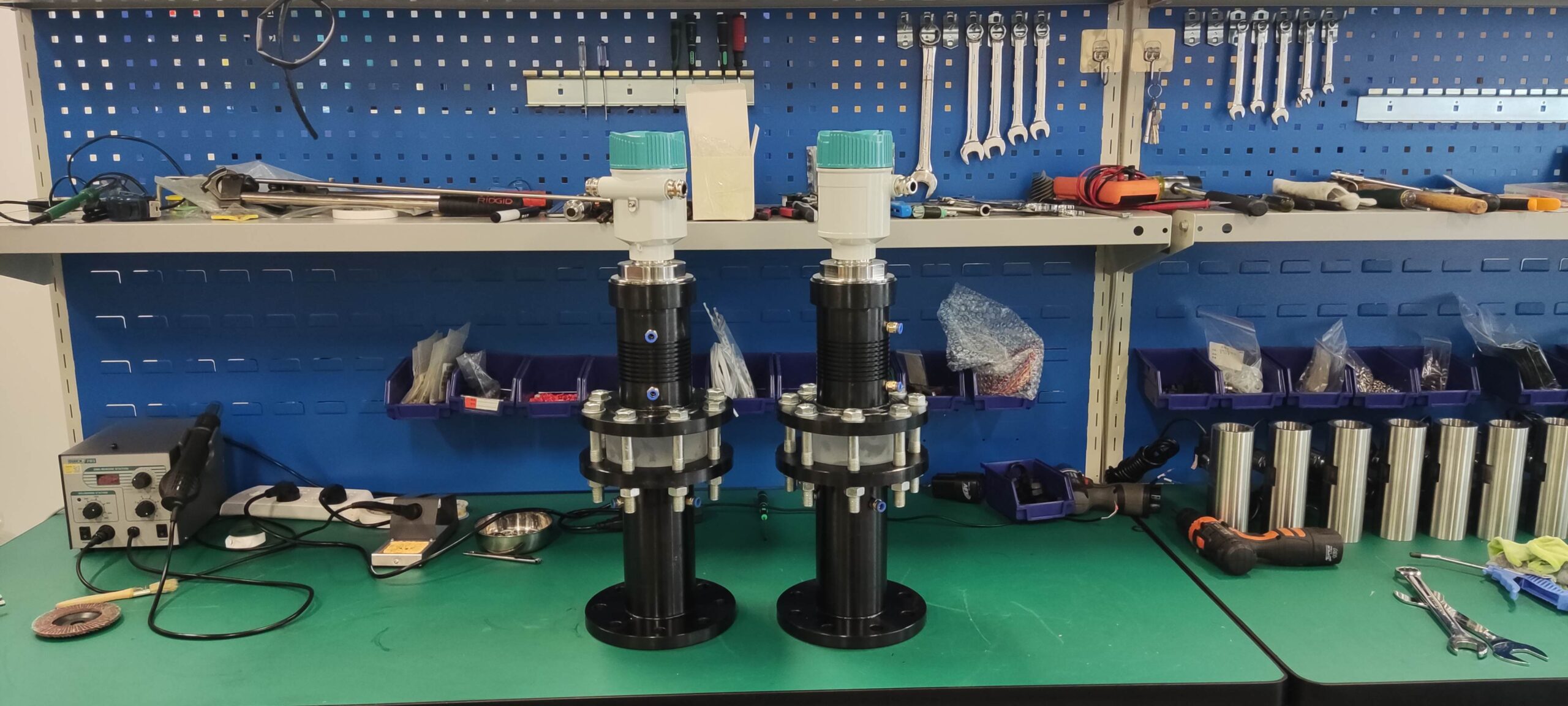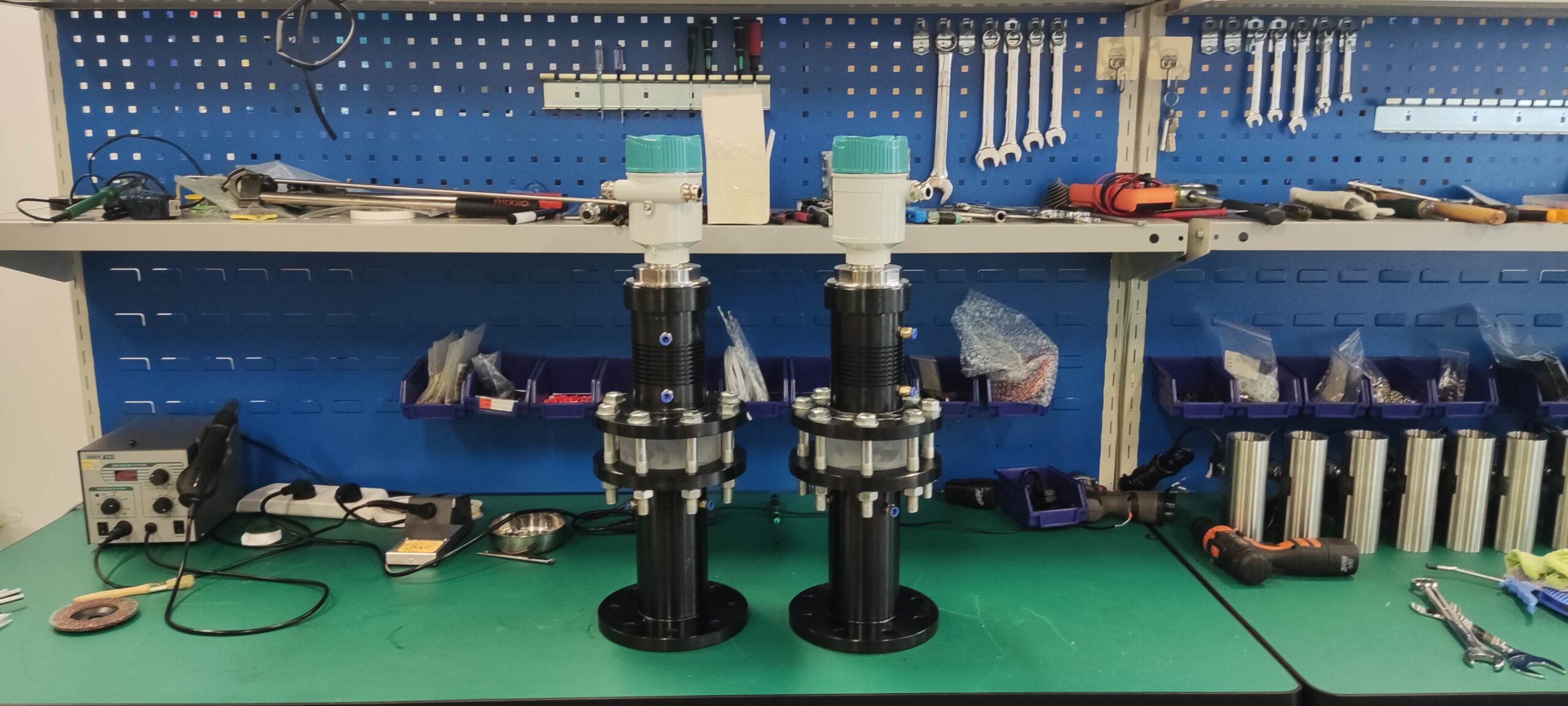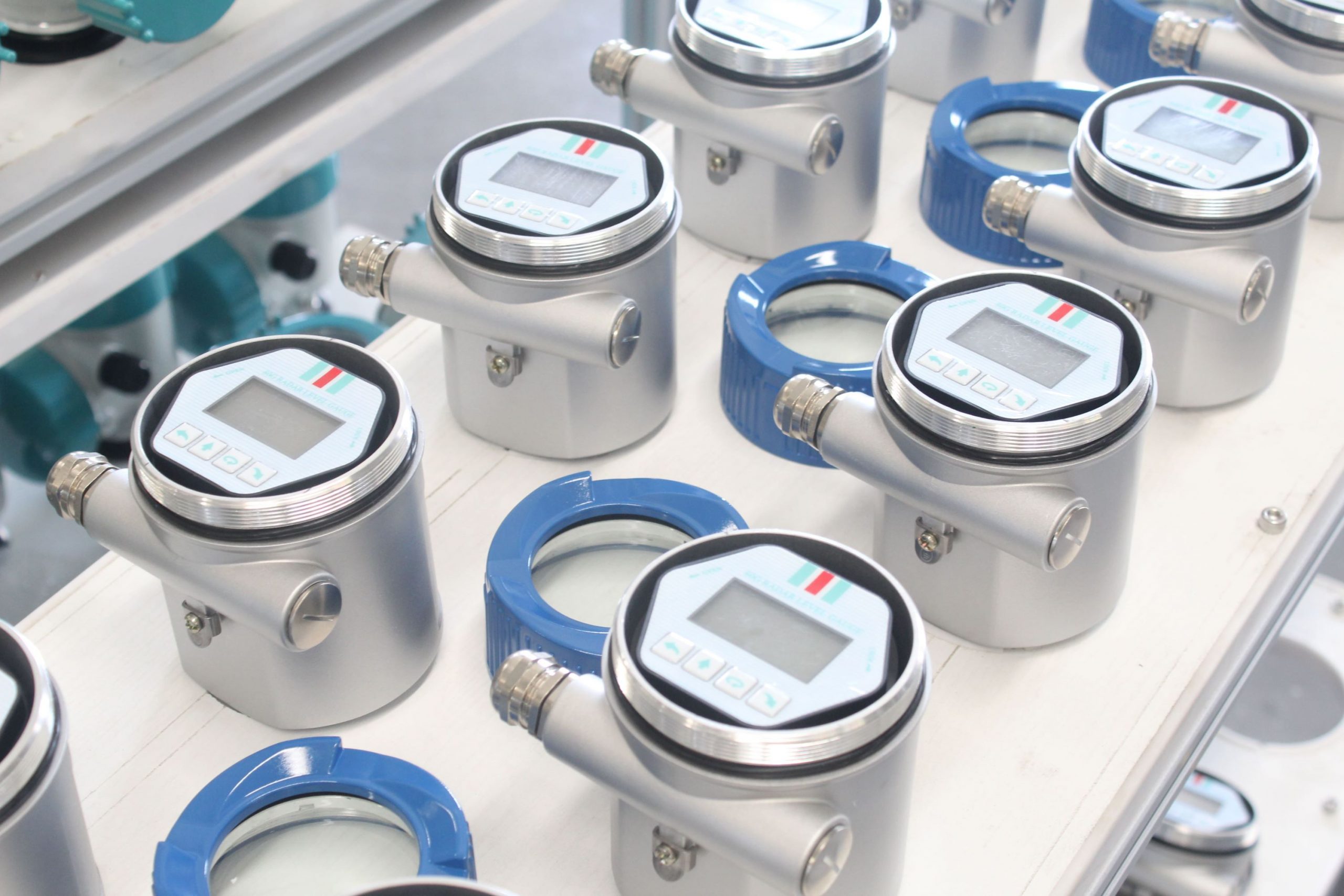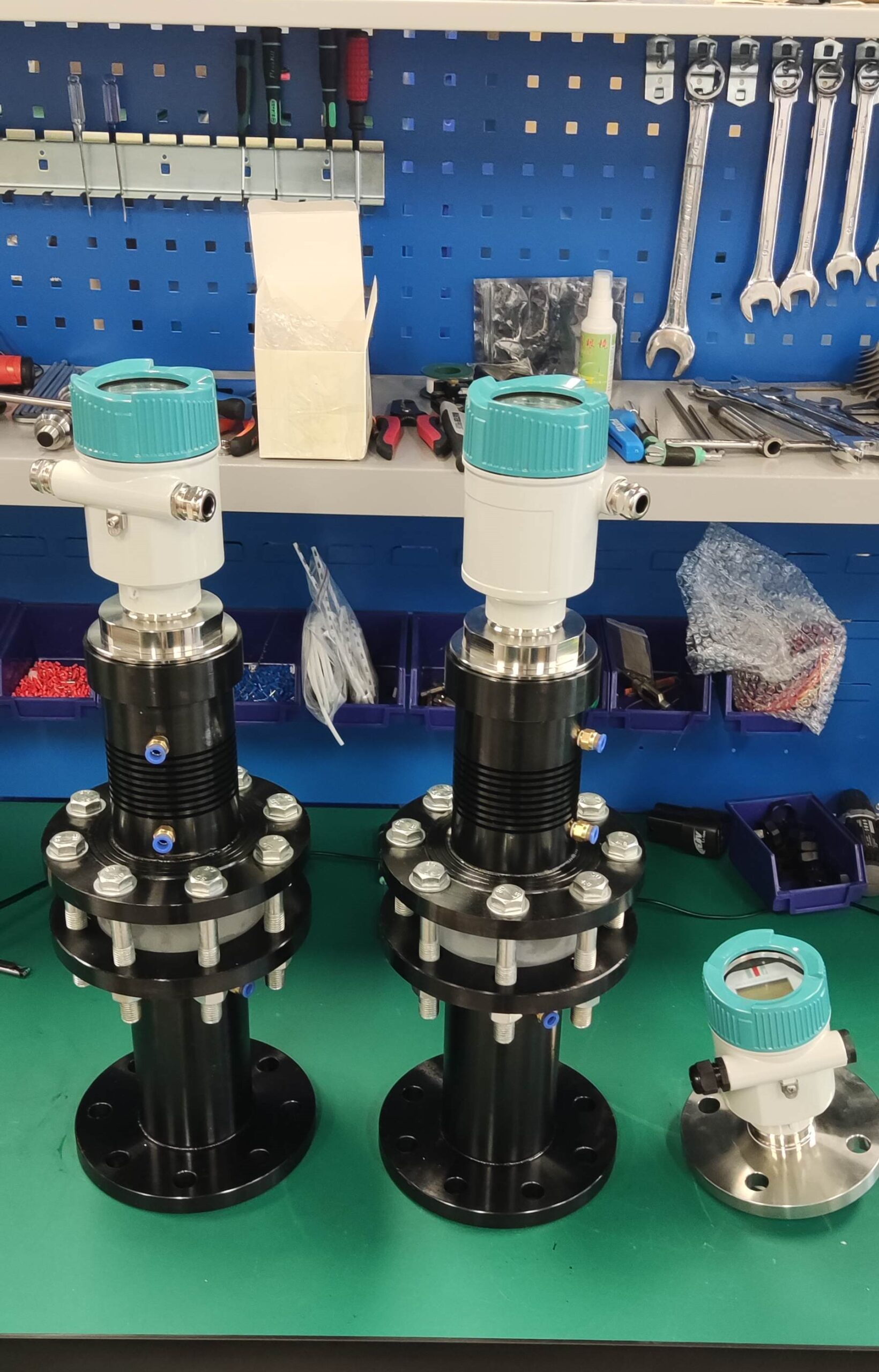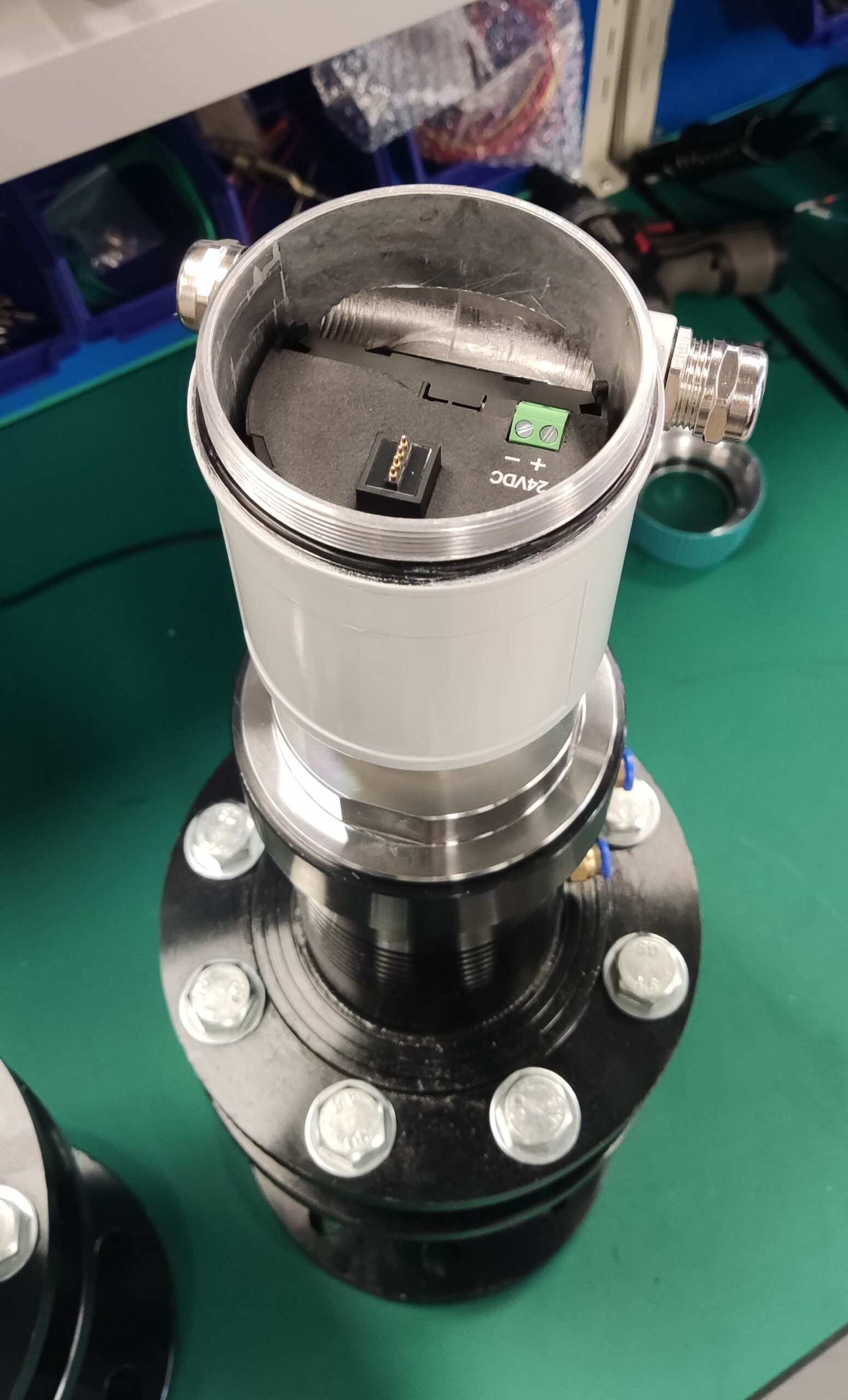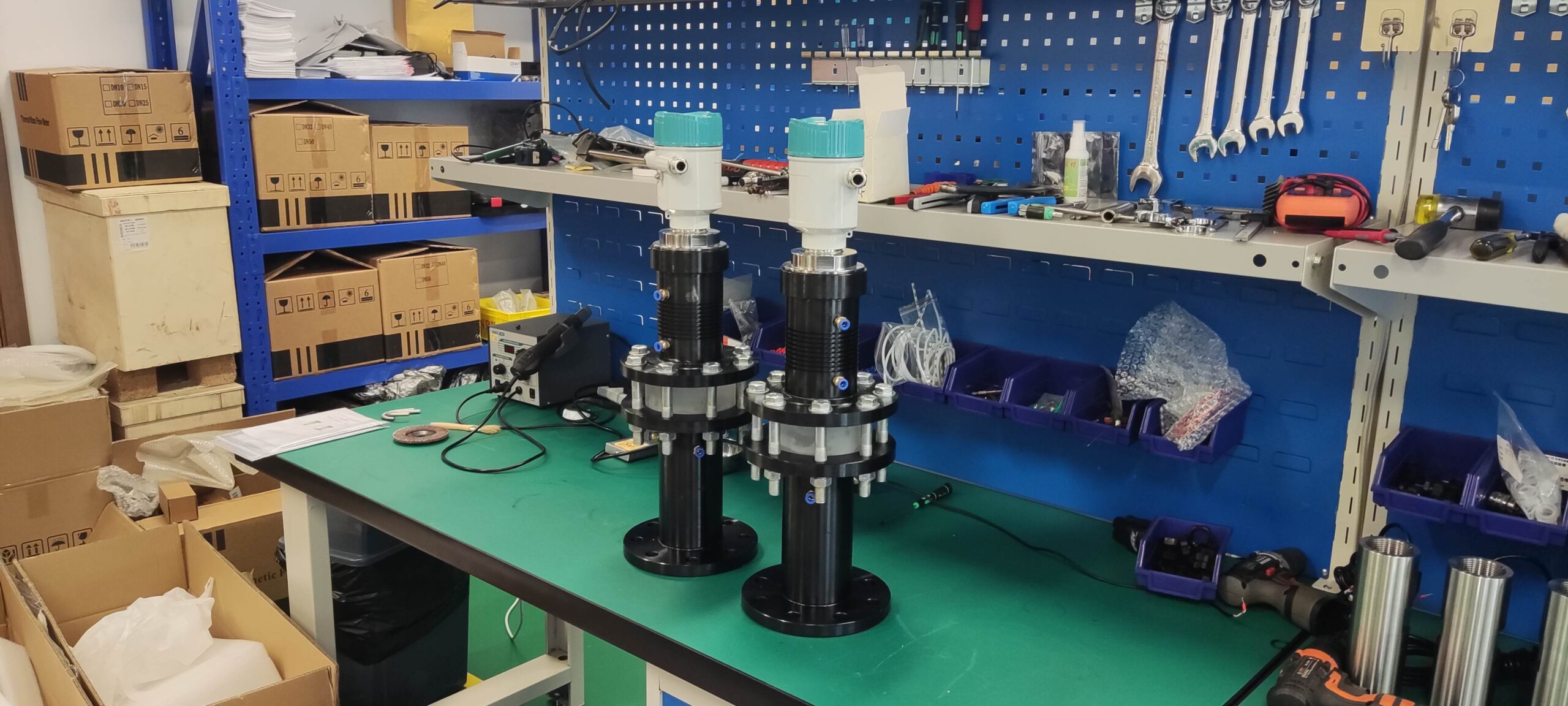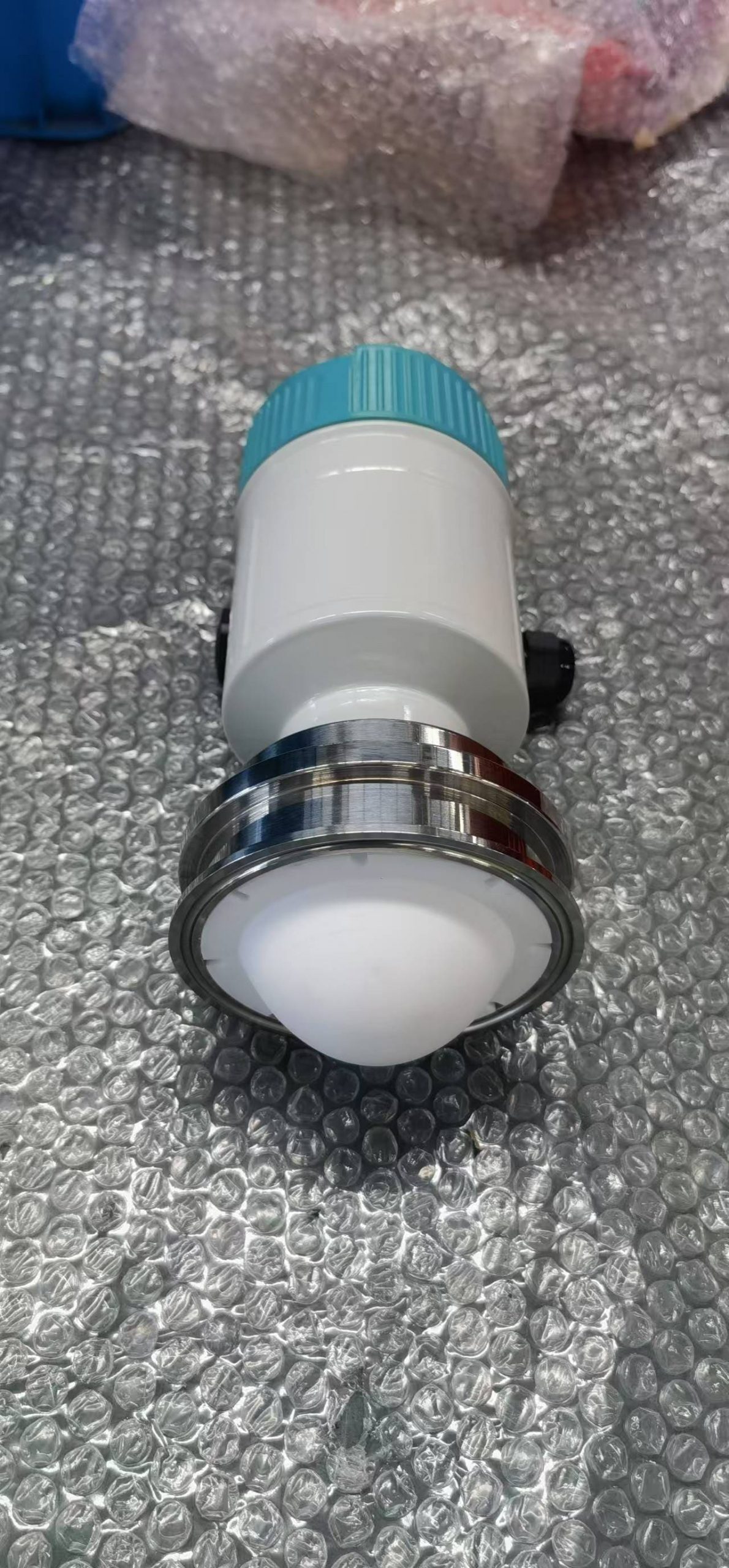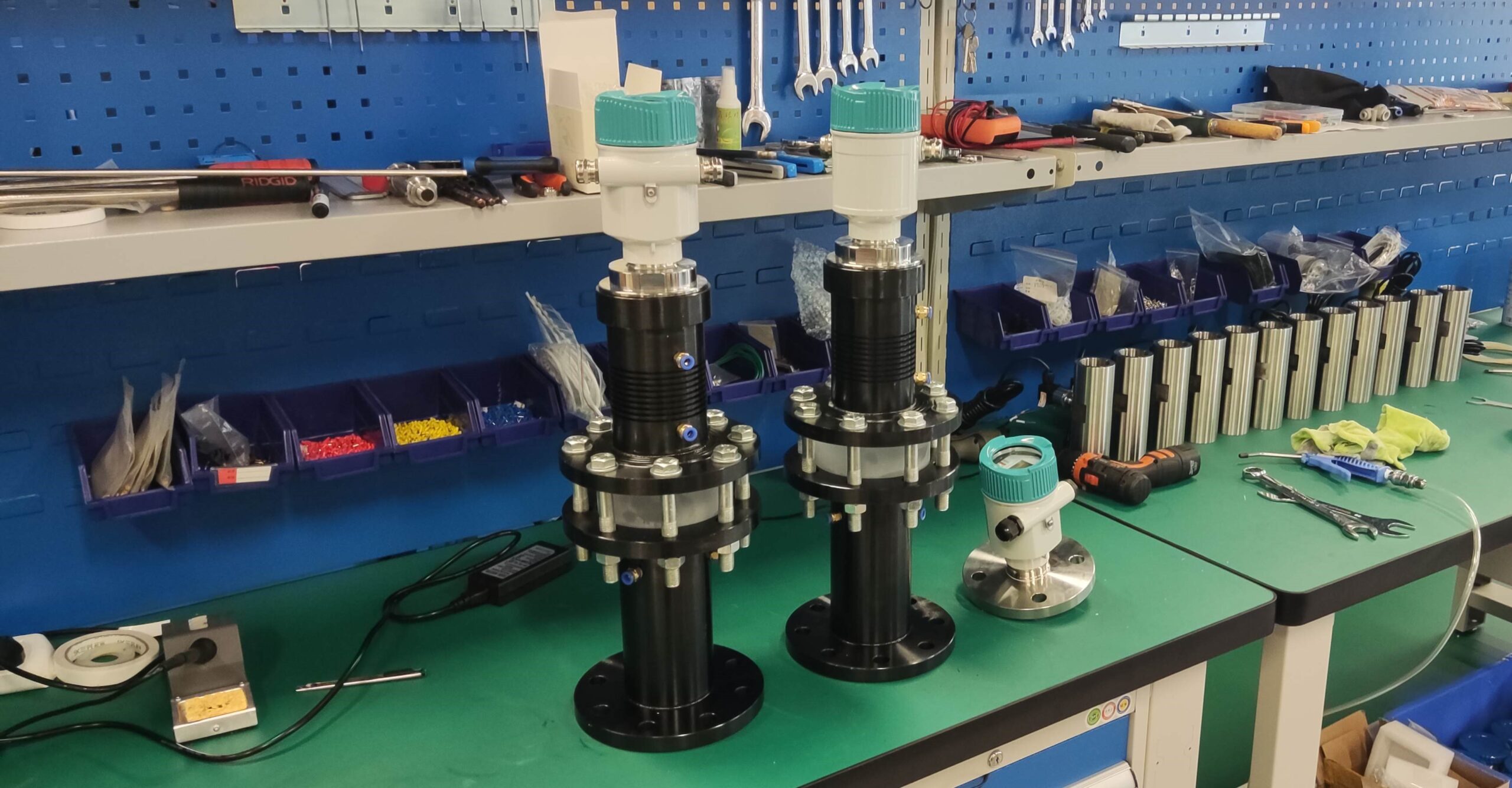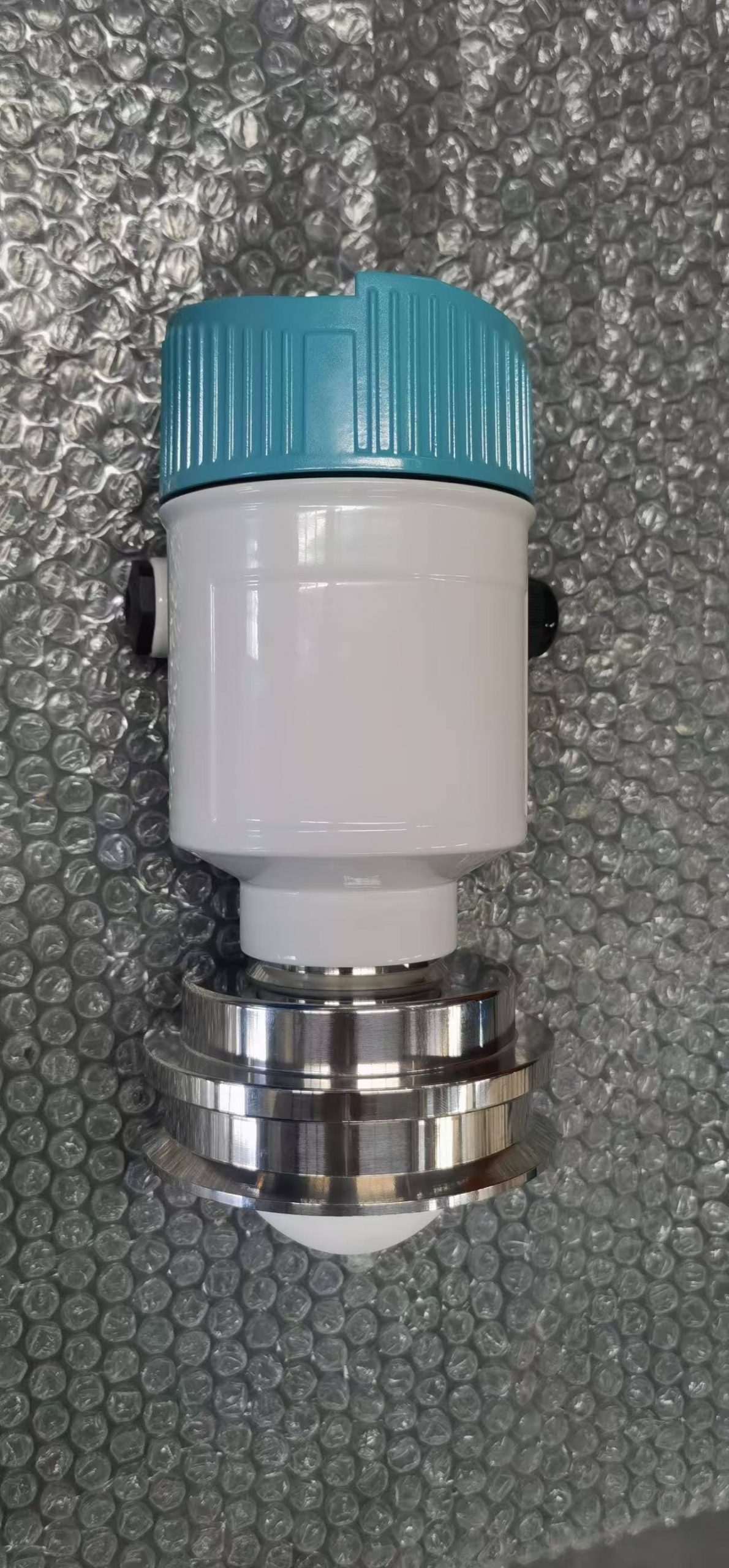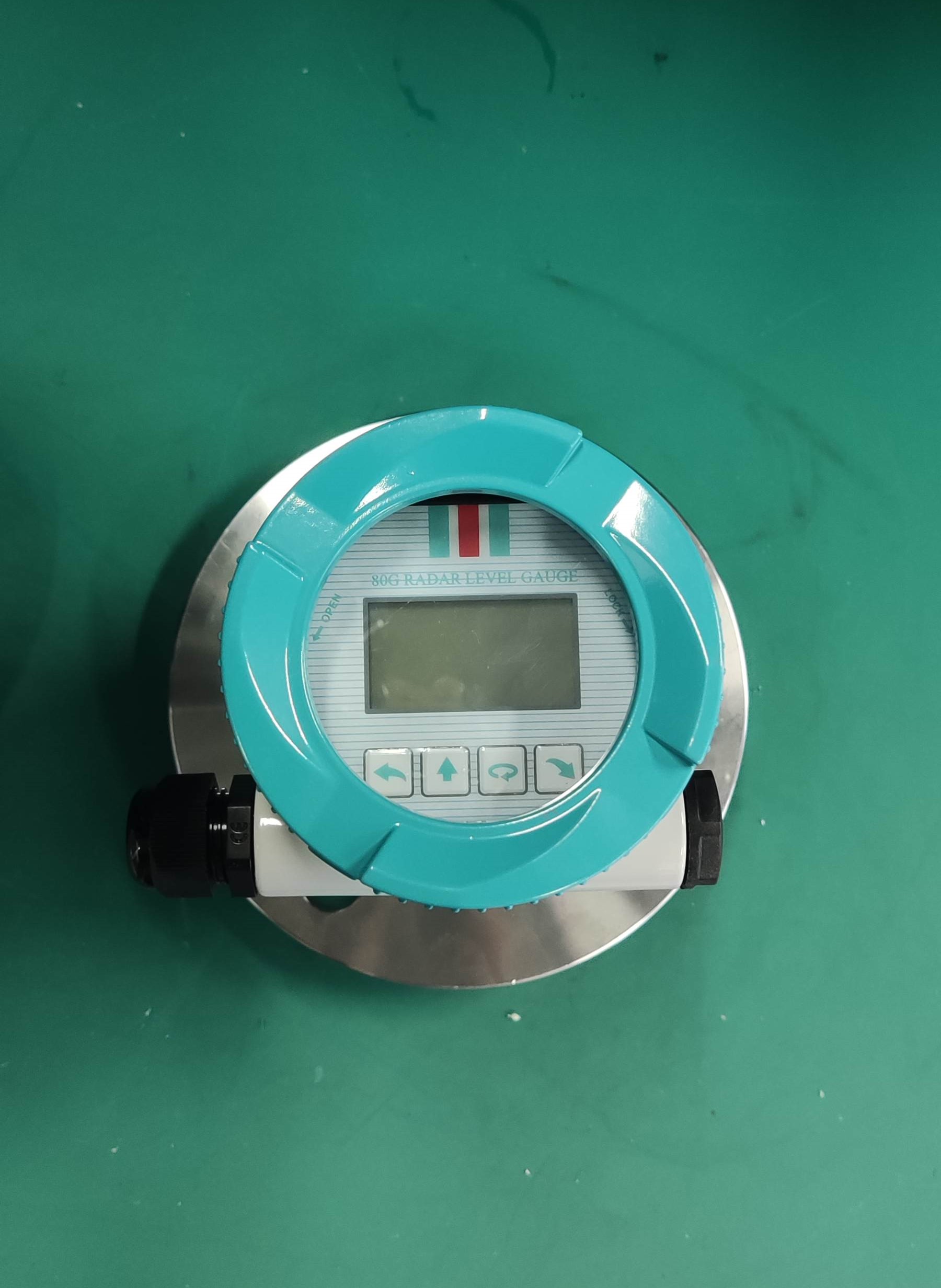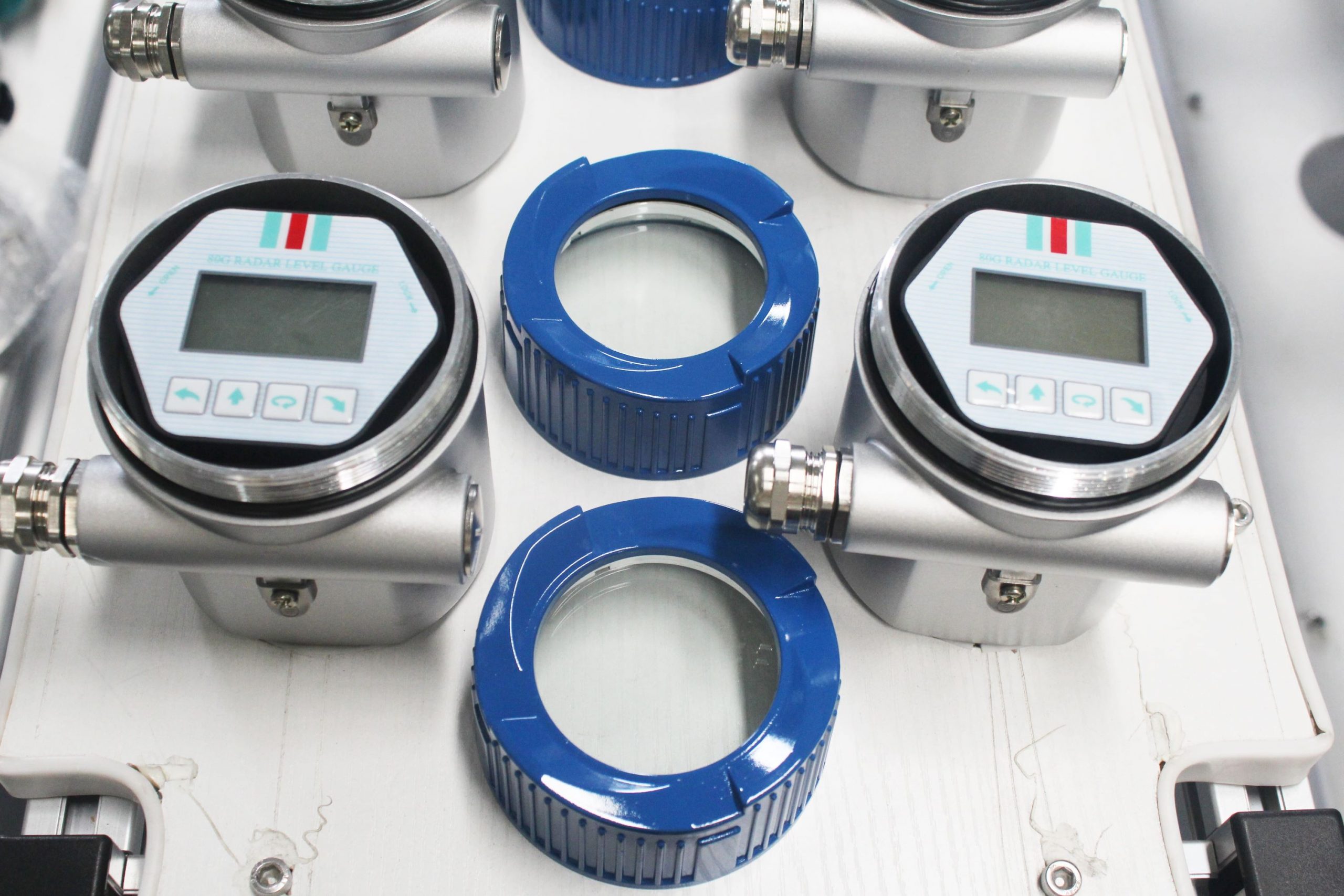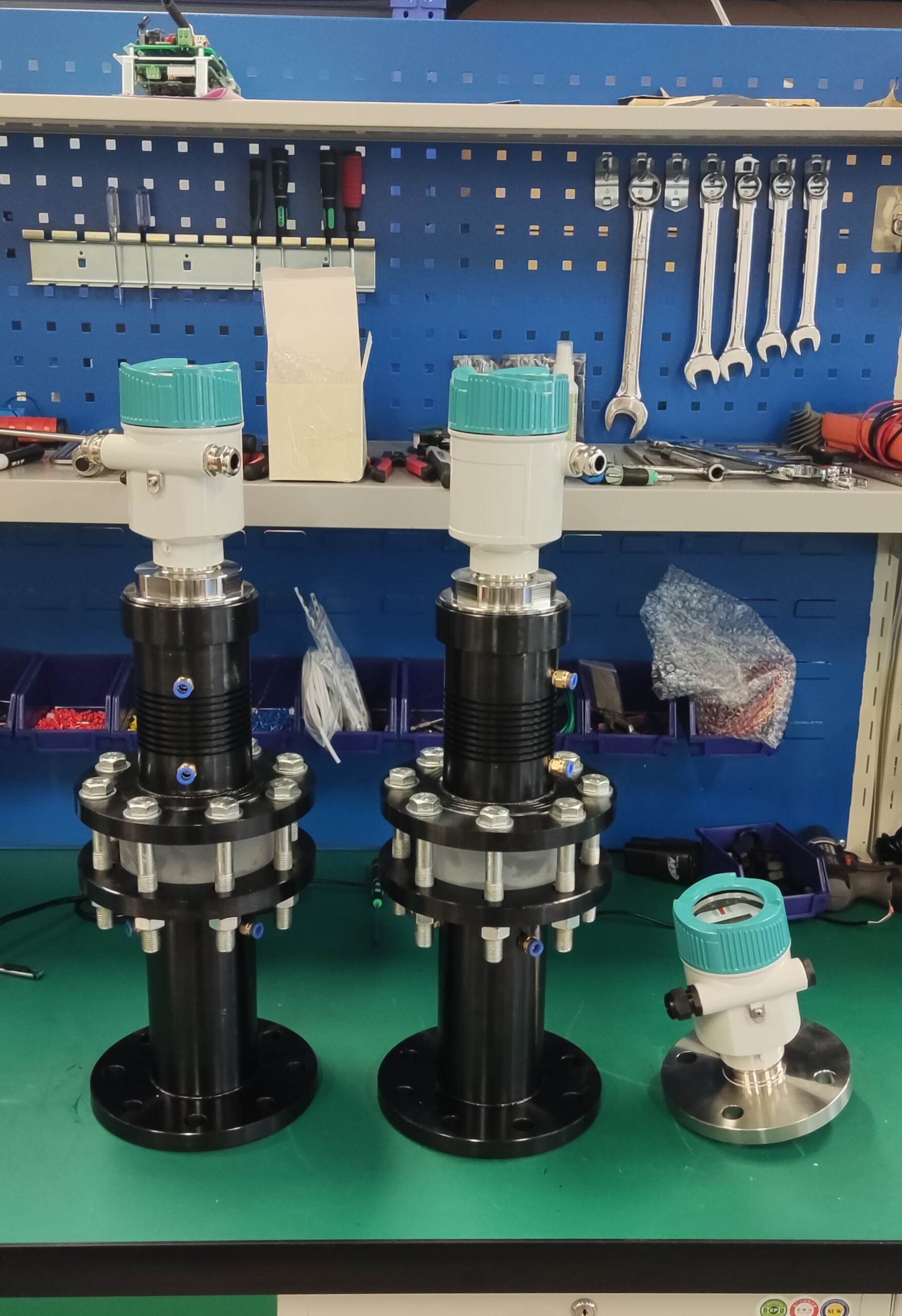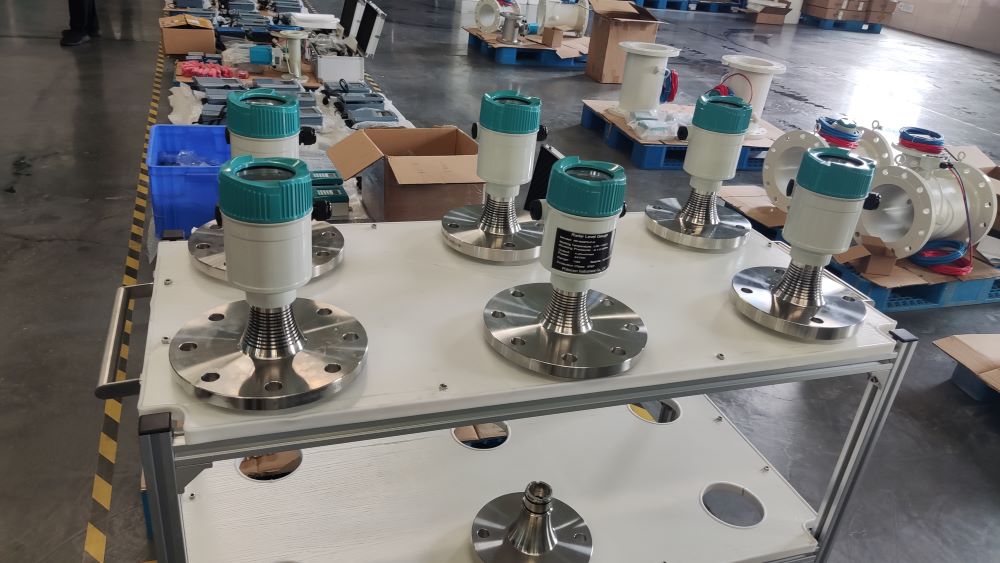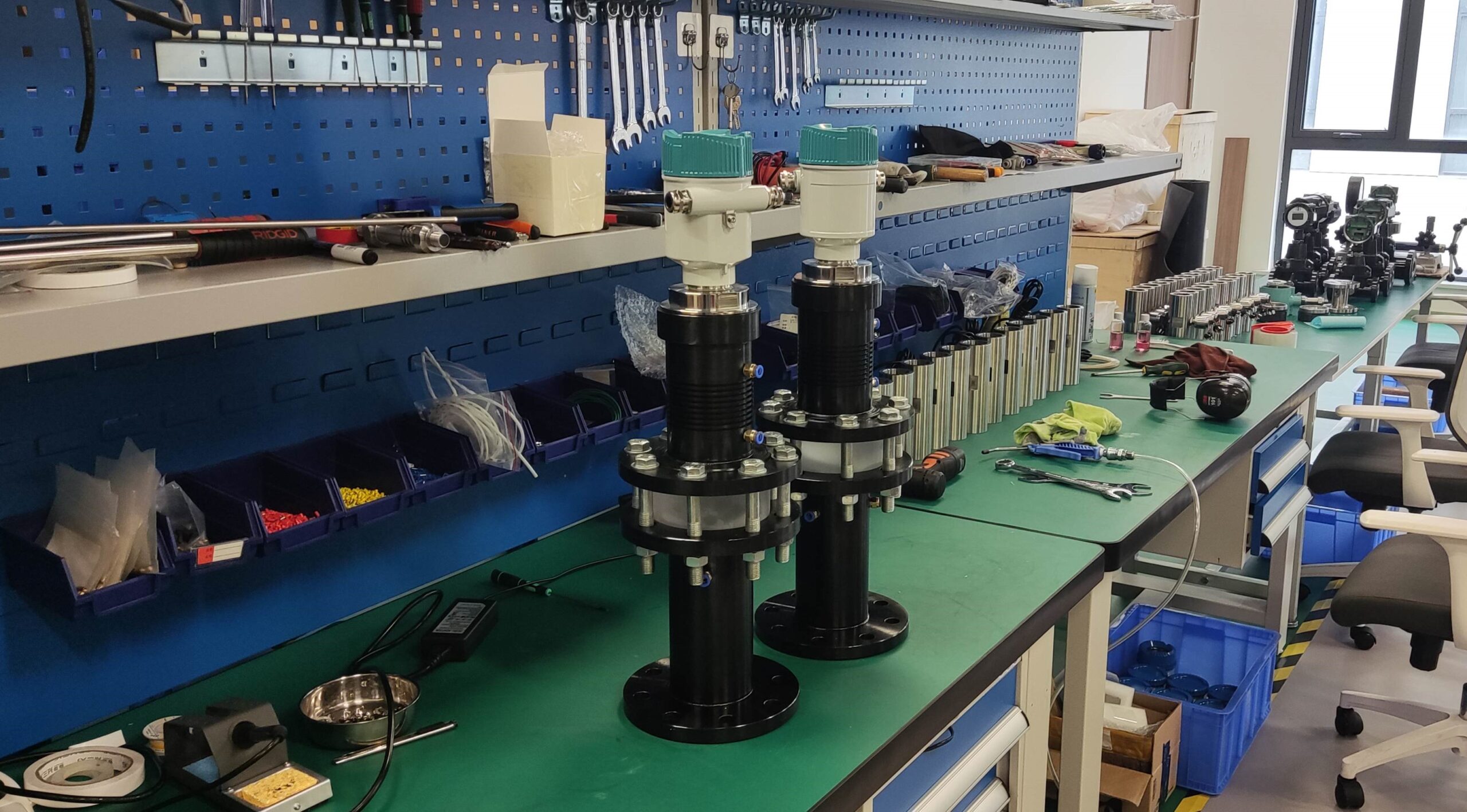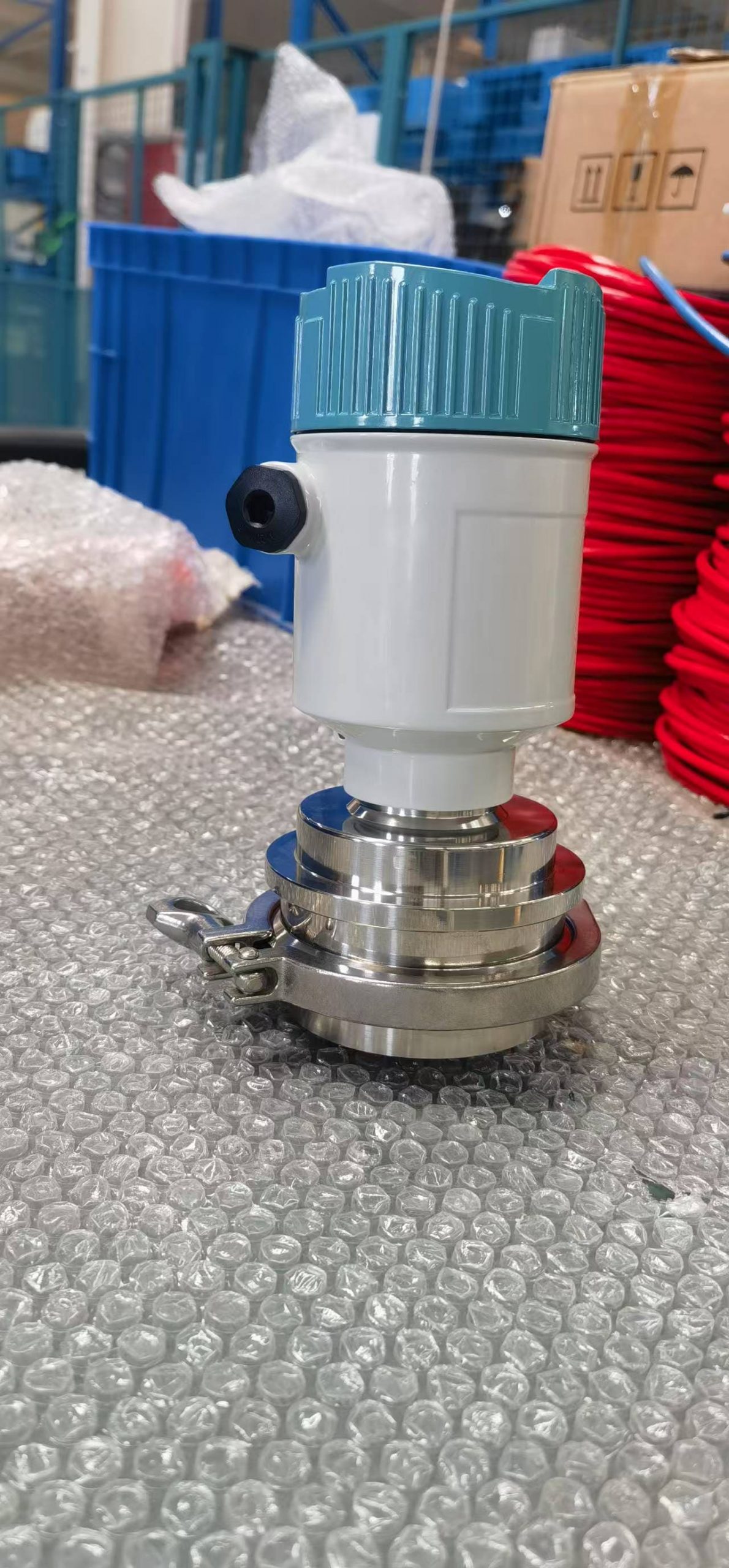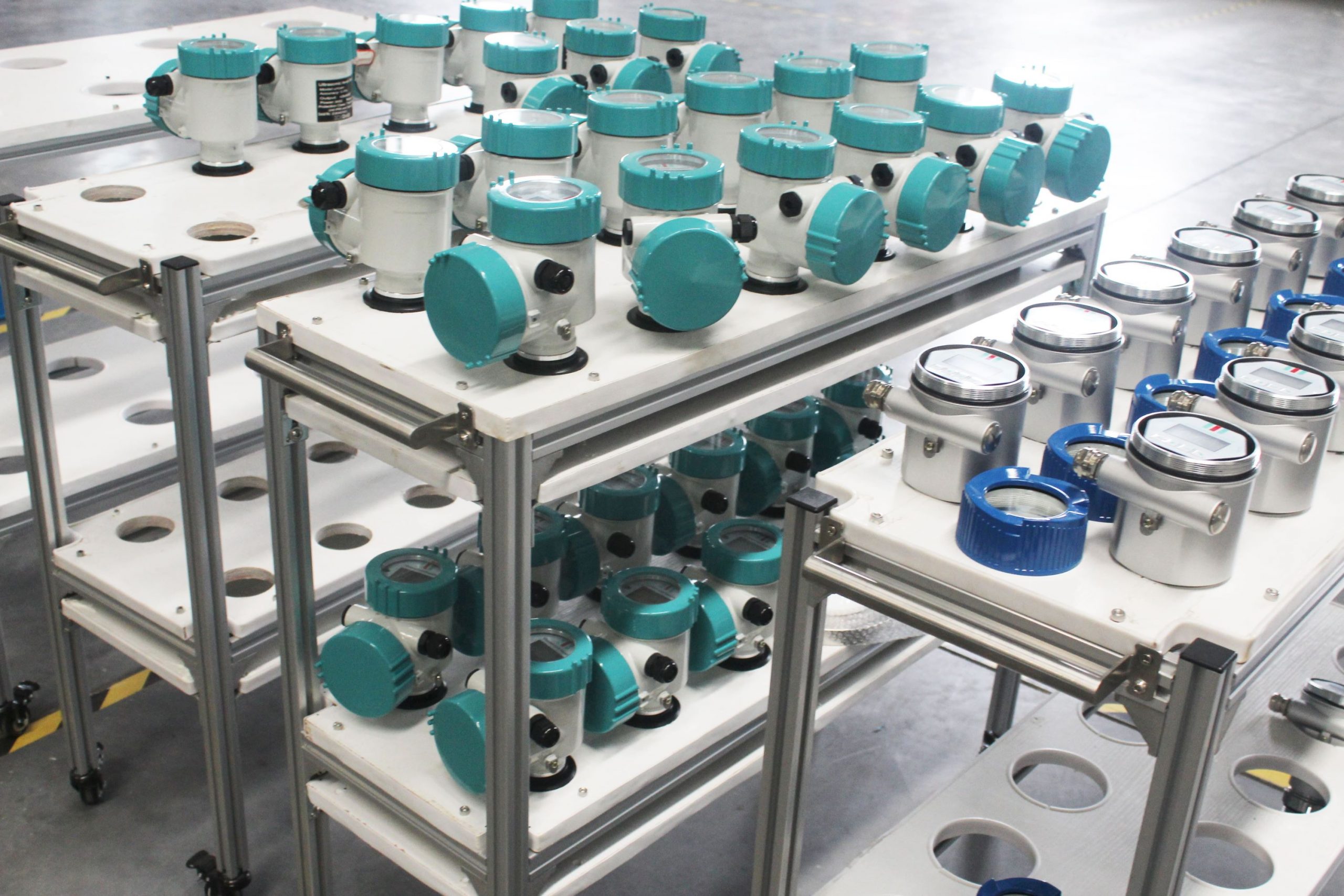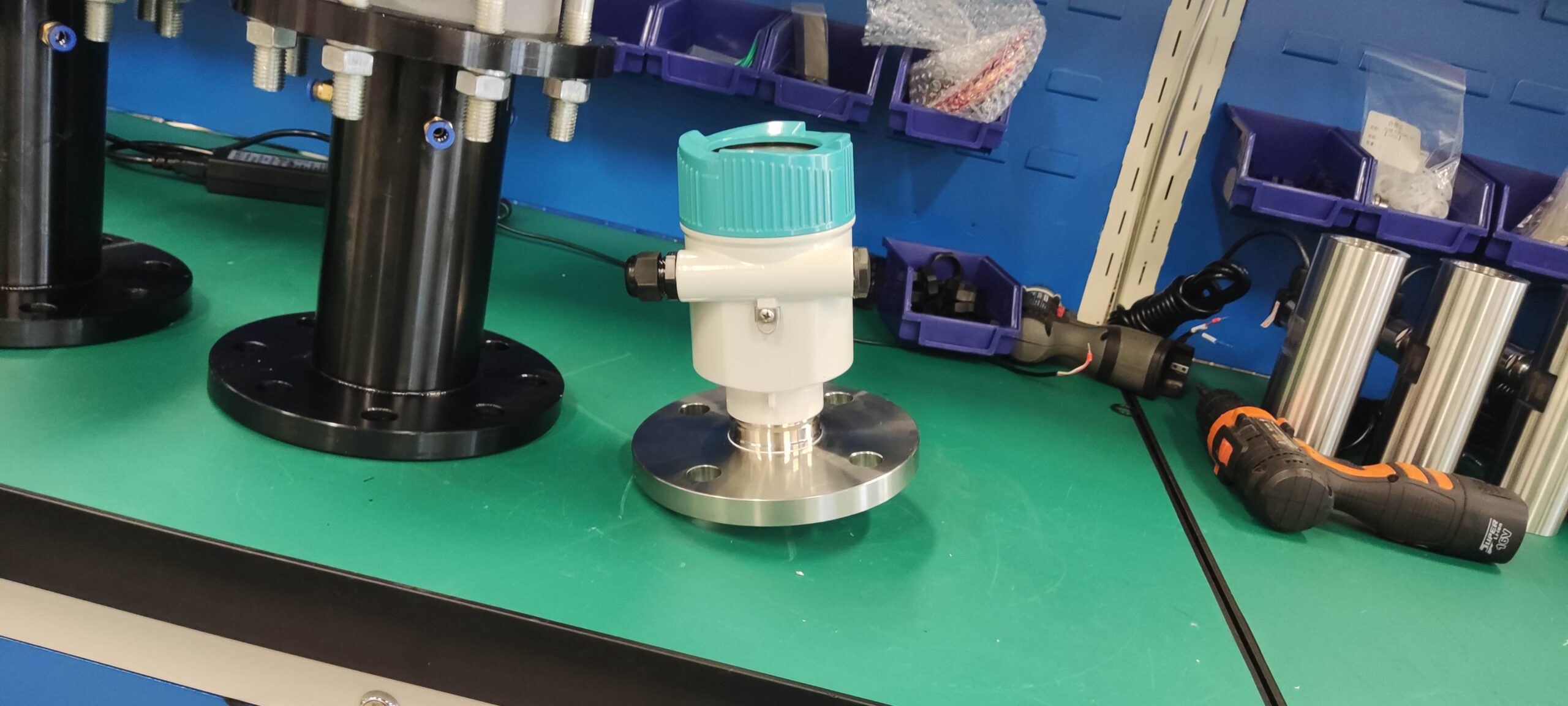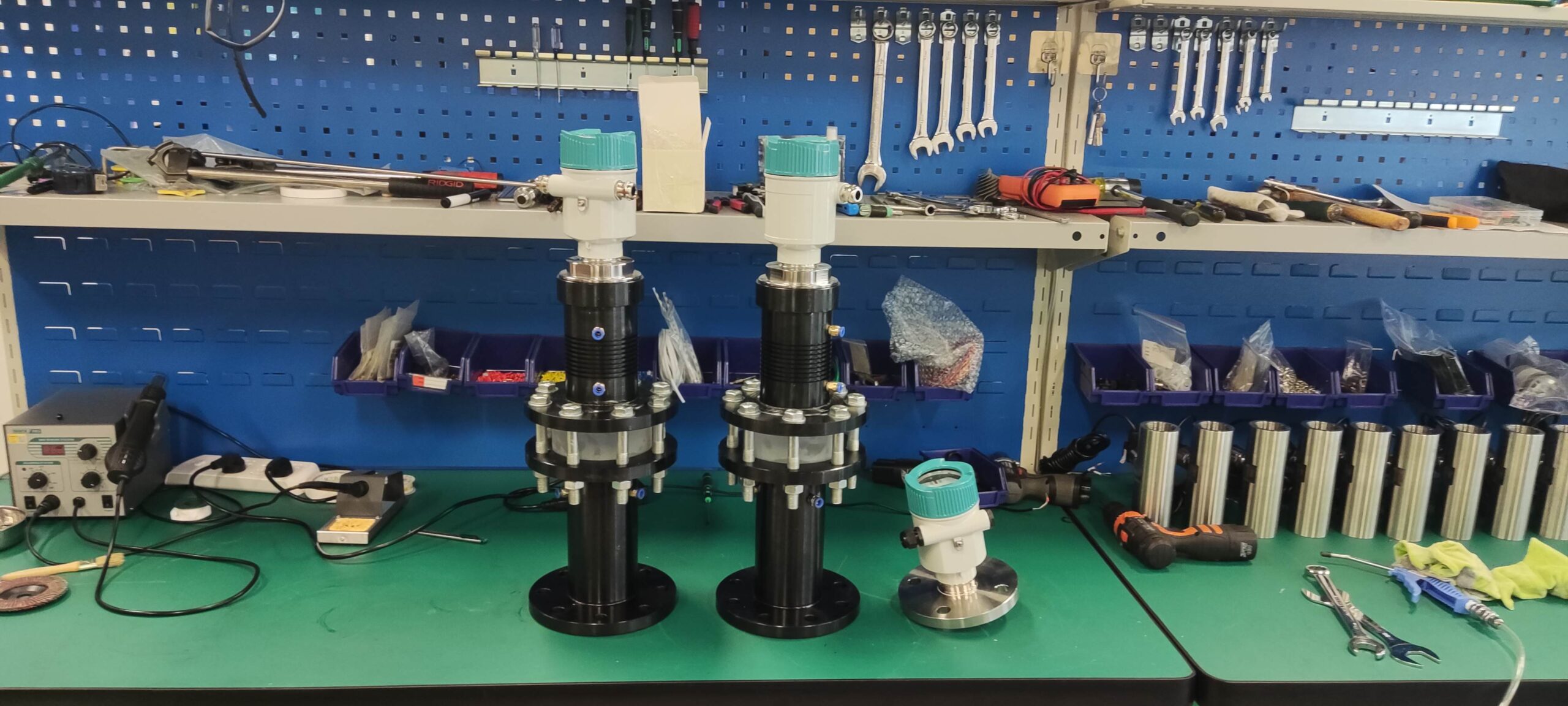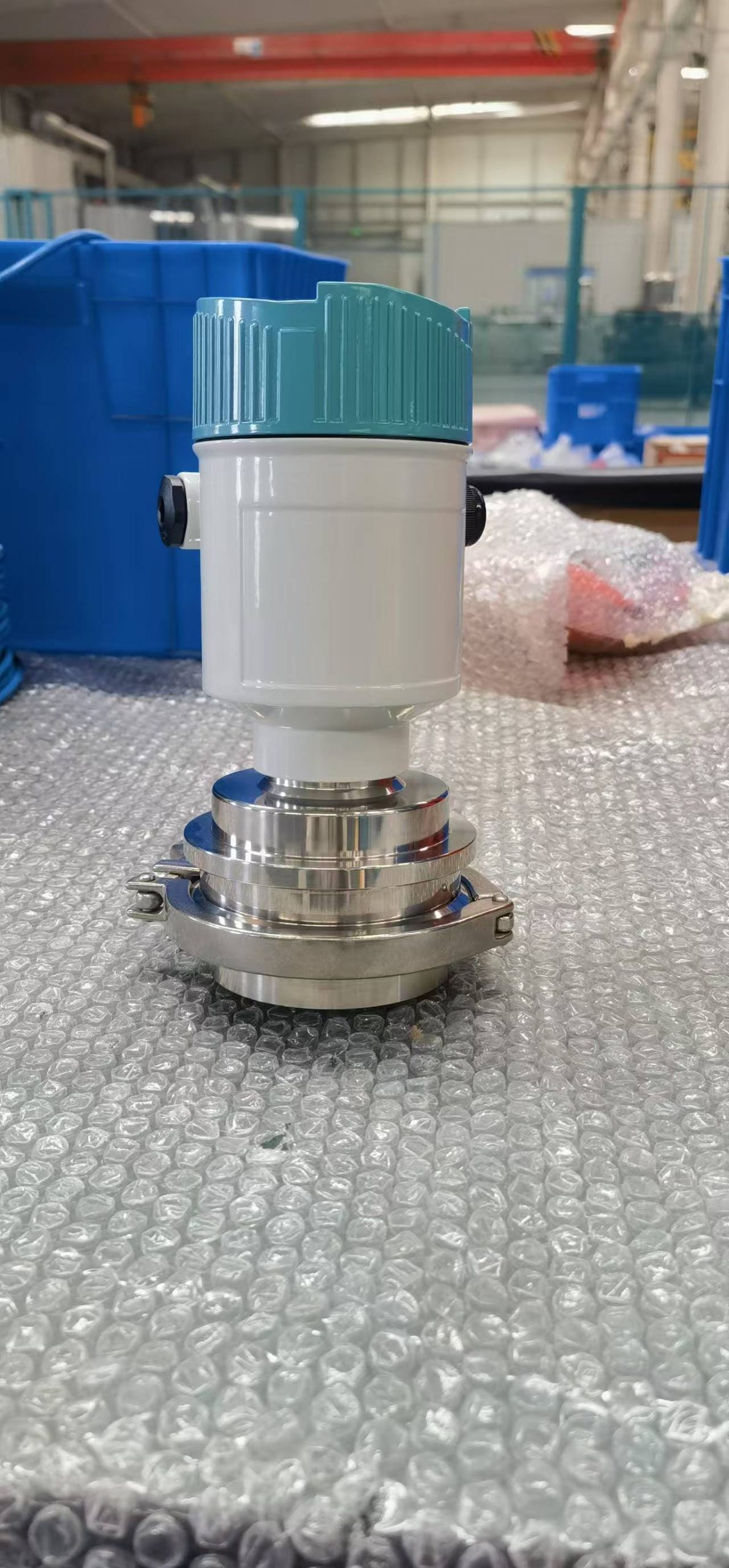The difference between ultrasonic level meter and radar level meter
Radar level meter adopts the mode of transmitting – reflecting – receiving. The antenna of the radar level gauge emits electromagnetic waves, and the radar waves travel at the speed of light. After these waves are reflected by the surface of the measured object, they are received by the antenna. The time from transmission to reception of the electromagnetic wave is proportional to the distance to the liquid surface.
The radar level meter records the time experienced by the pulse wave, and the transmission speed of the electromagnetic wave is constant, then the distance from the liquid level to the radar antenna can be calculated, so that the liquid level can be known. In practice, there are two kinds of radar level meter, namely frequency-modulated continuous wave type and pulse wave type. The liquid level meter using frequency modulated continuous wave technology has high power consumption, four-wire system and complex electronic circuit. The liquid level meter using radar pulse wave technology has low power consumption and can be supplied with two-wire 24VDC power supply, which is easy to achieve intrinsic safety, high precision and wider application range.
Ultrasound uses sound waves, radar uses electromagnetic waves, that’s the difference. Moreover, the penetration and directivity of ultrasonic waves are much stronger than electromagnetic waves, which is why ultrasonic detection is now more popular.
Main application differences:
Ultrasonic and radar are mainly different measurement principles, which lead to their different applications. Radar is based on the dielectric constant of the measured substance, while ultrasound is based on the density of the measured substance. Therefore, the measurement effect of radar for substances with very low dielectric constant is reduced, and ultrasound is generally recommended for solid substances. At the same time, radar emits electromagnetic waves, which do not need a media, while ultrasound is a sound wave, which is a mechanical wave, which needs a media. In addition, the emission mode of the wave is different, such as ultrasonic wave is emitted through the vibration of piezoelectric substances, so it can not be used in high pressure or negative pressure occasions, generally only in atmospheric pressure vessels. Radar can be used in high-pressure process tanks. Radar has a larger emission Angle than ultrasound, and non-contact radar is not recommended in small containers or thin containers, and guided wave radar is generally recommended. Then is the accuracy of the problem, of course, the accuracy of the radar is definitely higher than the ultrasonic, in the storage tank must be used high-precision radar, and will not choose ultrasonic. As for the price, ultrasound is generally lower than radar, of course, some large range of ultrasonic prices are also very high, such as 6-70 meters of range, then the radar can not reach, can only choose ultrasonic.

